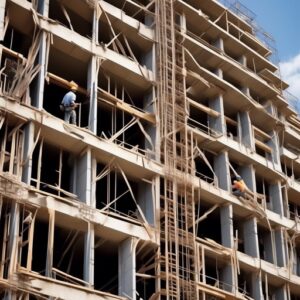In the realm of manual labor and construction work, a reliable pair of work pants isn’t just a luxury—it’s a necessity. Contractors, craftsmen, and workers across various industries depend on durable, comfortable, and functional clothing to get through demanding workdays. Among the sea of options, Blaklader Work Pants stand out as a favorite among professionals. But what sets them apart, and why do contractors swear by them? Let’s delve into the intricacies of Blaklader Work Pants to uncover the reasons behind their popularity.
Durability
One of the primary reasons contractors gravitate towards Blaklader Work Pants is their exceptional durability. Constructed with heavy-duty materials and reinforced stitching, these pants can withstand the rigors of the toughest job sites. Whether it’s kneeling on rough surfaces, enduring abrasive materials, or enduring frequent washing, Blaklader pants hold up remarkably well over time. For contractors, this durability translates to long-term savings by reducing the frequency of replacements.
Functionality
Beyond durability, Blaklader Work Pants boast an array of functional features tailored to the needs of contractors. From multifunctional pockets designed to accommodate tools and accessories to knee pad pockets for added protection and comfort during extended periods of kneeling, every aspect of these pants is meticulously crafted with utility in mind. Contractors appreciate the thoughtfulness of these design elements, as they enhance efficiency and productivity on the job.
Comfort
Comfort is paramount for contractors who spend long hours on their feet, often in challenging environments. Blaklader Work Pants prioritize comfort without compromising on durability or functionality. The inclusion of stretch panels and articulated knees ensures freedom of movement, while breathable fabrics enhance ventilation to keep contractors cool and dry even in hot conditions. Additionally, adjustable waistbands and ergonomic fits contribute to overall comfort, allowing contractors to focus on their work without distractions.
Versatility
Versatility is another hallmark of Blaklader Work Pants that resonates with contractors. Whether working in construction, carpentry, plumbing, or any other trade, professionals appreciate the adaptability of these pants across various job requirements. From lightweight options suitable for warmer climates to insulated variants for cold weather conditions, Blaklader offers a diverse range of styles to accommodate different preferences and needs. This versatility ensures that contractors can rely on their Blaklader pants year-round, regardless of the challenges they face on the job.
Safety
Safety is non-negotiable in the construction industry, and Blaklader Work Pants prioritize this aspect with innovative safety features. Reflective accents enhance visibility in low-light conditions, reducing the risk of accidents on busy job sites. Moreover, flame-resistant and high-visibility options cater to specific safety regulations, providing contractors with peace of mind knowing that they’re adequately protected while on the job. By prioritizing safety, Blaklader reinforces its commitment to the well-being of contractors and workers.
Brand Reputation
Over the years, Blaklader has built a strong reputation for producing high-quality workwear that meets the demanding standards of professionals. Contractors often rely on word-of-mouth recommendations from peers within the industry, and Blaklader consistently receives praise for its reliability, durability, and performance. This positive reputation serves as a testament to the brand’s dedication to excellence and further solidifies its position as a trusted choice among contractors worldwide.
Conclusion
In conclusion, Blaklader Work Pant have earned the trust and loyalty of contractors for a multitude of reasons, ranging from their unparalleled durability and functionality to their superior comfort, versatility, safety features, and brand reputation. By understanding the unique needs of professionals in the construction industry and consistently delivering on those needs, Blaklader has established itself as a preferred choice for those who demand nothing but the best from their workwear. For contractors seeking dependable, long-lasting performance on the job, Blaklader Work Pants undoubtedly stand out as a worthy investment.











